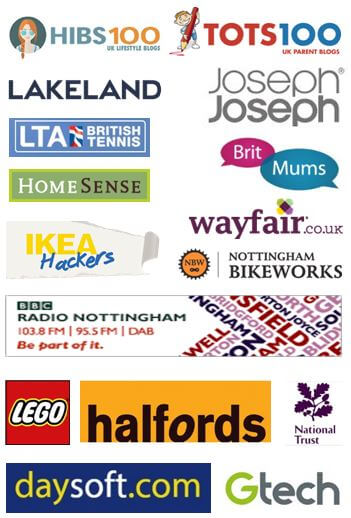5 ways to increase website traffic I wish I’d known when I started blogging.
Every blogger wants to increase website traffic and reach a wider audience. When you’ve spent hours planning, writing and creating a blog post, it’s demoralising when it doesn’t get the attention it deserves. If you’re new to blogging, and only just beginning to attract readers to your blog, it’s hard to see the posts you’ve so carefully crafted only get a handful of views. Even if you’re an established blogger, your favourite posts can soon slip into the archives, never to be seen again, after the initial spike in traffic. It took me more than a year to realise my beloved posts would have received much more attention and recognition if I’d spent more time on SEO (Search Engine Optimisation), establishing backlinks, and reaching out to my target audience.
The problem is, when you first start blogging, it’s as much as you can do to publish a post at all, never mind promote and market the thing! There are so many new skills to learn, information to digest and technical issues and glitches to overcome. One minute you’re navigating your way around WordPress, installing plug-ins, or getting to grips with Google Analytics, the next you’re trying to build a following on social media. All the while, you’re worried sick that an evil hacker might infect your site with a word-eating virus and destroy months and months of your hard work just for the hell of it!
Looking back, I wish I’d paid more attention to making sure my blog posts had the best chance of reaching my audience. The best chance of being seen, shared and enjoyed. As I flapped about, wondering what to tackle next on my seemingly endless blogging ‘to do’ list, I wish someone had grabbed me by the shoulders, stopped me in my tracks, looked me in eye and said in a solemn voice, ‘Content is king’, but it doesn’t matter how great that king is if no one can find his kingdom!’
Content is king, but it doesn’t matter how great that king is if no one can find his kingdom! – Jane Taylor, enlightened blogger.
Blog post exposure: Get yourself seen!
It took me a while to realise no matter how much time and effort I put into writing a blog post, it comes to nought if I don’t market the pants off it and do everything I can to increase its exposure. Of course, it’s hard to get exposure, especially if you are fairly new to blogging and are only just beginning to build a following on social media platforms like Twitter, Instagram, Facebook and Pinterest. However, there are still things you can be doing right now to maximise your blog post’s exposure and bring traffic to your blog.
I’m going to share my Top 5 tips for increasing traffic to your blog so your beloved blog posts get maximum exposure and reach a wider audience. It’s not an exhaustive list, nor is it meant to be. These are simply 5 things I think you should be doing to make sure your posts, (and therefore your blog), get noticed. Whether you’re a newbie blogger or you’ve been writing your blog for several years, I’m convinced your blog posts, old and new will get noticed if you follow my advice.
5 ways to increase traffic to your website.
1.Guest posts and ‘Linky parties’.
Getting your blog and/or blog posts featured on popular, high-ranking websites is a great way to drive traffic to your website and maximise your blog post’s exposure. These valuable ‘backlinks’ can also help to boost your Domain Authority (DA) too, which helps you to rank higher in Google searches. Have a look for popular websites in your niche that accept guest posts, articles, projects and submissions and see if you can get featured. If they don’t accept guest submissions, or your post isn’t accepted for publication, you can still drive traffic to your site and build valuable backlinks by posting comments (with a link to your blog post) on high ranking sites (see point 2). In the past, I’ve been featured on Ikeahackers.net, Apartment Therapy, Wayfair.com and Hibs100 and Tots100 websites, among others. I’ve also submitted guest posts on other blogs, one of the most popular being my account of my most embarrassing moment on Absolutely Prabulous.com’s ‘The Oops Files’: Oops Files #24: Desperate measures by guest Maflingo.
Joining ‘linky’ parties or linkys, where host blogs allow you to add thumbnail links to one or two of your posts, in return for reading, sharing and commenting on the other posts in the linky, will also help drive traffic to your site. If you’re looking for a linky to join, pop across to Aby’s blog, You Baby Me Mummy for a printable copy of her comprehensive Linky List: HERE.
2. Commenting.
Being sociable and commenting on other websites, social media channels and blogs is a great way to get yourself noticed, especially as many blogs and websites allow you to include a link to your blog in your comment. Obviously, don’t link drop and run. Instead, find websites in your niche and articles you’re interested in and leave meaningful comments. Engaged readers often read blog post comments, and if they see links to articles on a similar topic, they’re more likely to click through to find out more.
Unfortunately, leaving links to your blog posts in comments isn’t as easy as it once was. That’s because the popular Commentluv plugin, which enabled commenters easily add a link to their recent blog posts via their RSS feed, is no longer being updated by the author. However, you can still add a clickable hyperlink to your comments if you aren’t given the opportunity to enter your URL by inserting a bit of html code.
How to create a clickable link to your website in a blog post comment.
Simply typing https://maflingo.com is unlikely to drive more traffic to your website because it isn’t clickable. People can see it, and if they had the time or inclination they could highlight it, then copy and paste it into the address bar on their browser, but who wants to faff around doing that?
To create a clickable link (with bold text), you need a simple bit of HTML code:
<a href=[insert url here]><b>[insert text here]</b>
e.g.
<a href=https://maflingo.com><b>Maflingo</b>
This will then show up like this: Maflingo
3. SEO.
If you want your blog posts to rank in Google search results, you need to get to grips with SEO (Search Engine Optimisation). SEO is the practice of increasing the quantity and quality of traffic to your website through organic search engine results. SEO is important because how highly your site ranks in search engines like Google, Bing and Yahoo influences the amount of direct organic (non-paid for) traffic you can get to your website. That’s because most search engine users rarely click through pages and pages of search results, instead they’re usually only interested in the first few pages.
If you’ve got a self-hosted WordPress blog, chances are you’ve been using the Yoast plug-in. Yoast helps you to optimise your blog posts (and web pages) for search engines by analysing things like keywords, blog post titles, SEO titles, meta descriptions, headings, url titles, subheadings and images. Once analysed, it suggests ways to optimise your post. However, it’s easy to become obsessed with getting a Yoast ‘green’ light. More importantly, as I’ve learned more about SEO, I’ve come to realise that although Yoast is a useful SEO tool, it should be seen as your co-pilot, not your autopilot!
In the early days when Yoast was my SEO autopilot, I focused on single keywords and scattered them in my posts, rather than thinking of all the keywords people might use to in their search terms. Sometimes I went over the top with keywords and stuffed too many into my posts so they didn’t flow naturally anymore. Sometimes I didn’t use the right keywords in my meta description or give my images searchable image titles and alt text. More importantly, the quirky blog post titles I chose, whilst piquing the interest of my email subscribers, were useless when it came to SEO, burying my posts way down the search rankings.
SEO is a big topic and I’ve only covered a few key points here. If you’d like to learn more about SEO, here are some of my favourite SEO resources:
- Brian Dean’s Backlinko YouTube channel has lots of tips on SEO and creating backlinks: https://www.youtube.com/user/backlinko
- Swoonworthy: SEO for bloggers Part 1: Understanding the Basics
- Swoonworthy: SEO for bloggers Part 2: How to optimise your blog
4. Optimising your images for Google and Pinterest.
When they say ‘Content is king’, they aren’t just talking about the words! Great images, with meaningful filenames and alt text descriptions can also help to increase post engagement and search engine ranking. Your images should be high quality and your feature image should make people want to click through and find out more.
I’d been blogging for about 8-10 months before I discovered the power of Pinterest as a traffic source via one of Jen Stanbrook’s Free Pinterest Courses (HERE). After that, I started creating high quality ‘Pinnable’ images (portrait orientation) using Canva, a free online picture editing website. I added these pinnable images to my blog and made sure they had long alt text descriptions containing keywords to make them more searchable on Pinterest. After publishing my post, I made sure I pinned my images to all my relevant Pinterest boards and Tailwind tribes directly from my blog. Within weeks, my tailor-made pins started to direct more Pinterest traffic to my blog.
If you want to use Pinterest to increase your traffic, make sure you set up a business account and apply for Rich Pins, so the blog post titles appear in bold in the Pin description and are more noticeable.
5. Facebook groups and communities.

My 1969 Cheltenham Fawn Caravan renovation post was a big hit with Facebook groups for caravan enthusiasts.
I’ve struggled to increase engagement on my Maflingo Facebook page. I’ve been blogging for almost 18 months but still only have around 750 followers. To be honest, I’ve not tried very hard to increase my Facebook following as I’ve spent most of my time working on Pinterest and SEO.
However, even if you don’t have much engagement on your blog’s Facebook page, you can still drive plenty of traffic to your blog using Facebook. How? By finding the perfect audience for your blog post or posts in Facebook Communities and Facebook Groups.
Not all of your blog posts will work for Facebook communities or groups, but some of them will be perfect. Just have a think about your potential audience when you write your post. Who’d like to read this post? Who’d be interested in this subject? Who will this post help or inform?
For example, last week I wrote a post about my friends 1969 Cheltenham Fawn Caravan restoration. I knew this post would appeal to vintage and classic caravan enthusiasts and caravanners in general, so I searched for caravan groups on Facebook, using keywords like vintage, classic, caravan, Cheltenham etc. I found around 8 to 10 groups for caravan enthusiasts and joined them. I familiarised myself with the group rules, read and commented on their posts and shared my caravan restoration post. The results were astonishing! Facebook referrals accounted for 88% of the traffic to my blog that day, (over 400 page views!). What’s more, as well as finding an audience for my blog post, I’ve found a community of like-minded people.
It’s never too late! Apply my top 5 tips to your old posts to increase website traffic.
I wish I’d known about these tips when I first started blogging, rather than having to go back through the archives and optimise and re-write my old posts. In the last few months I’ve tackled about 20 of my favourite posts, but it’s been worth the effort. I’ve watched my organic traffic increase and some of my posts have made it onto the first page of Google. Even better, my DA has jumped from 29 to 35 in a single MOZ update. Good times!
If you haven’t SEO’d your posts, shared them widely, or searched for a receptive audience for them yet, it can seem like a huge task. My advice is to tackle a couple of posts at a time. Start with posts that are already popular and think about how you can make them even better. For example, is there anything else your reader might like to know? Have you included relevant keywords? Have you got a strong title and meta description containing plenty of keywords and phrases? Have you added some internal links to some of your other relevant posts? If your post needs improving, follow my top 5 tips and hopefully, if you’ve got great content, more and more people will find their way to your kingdom.
Other useful tips for bloggers.
If you’re a new blogger and you want even more tips on blogging, you need to check out Island Living 365’s post: 26 things that every new blogger needs to be doing.
Over to you.
Have you given your posts the best chance of getting maximum exposure? If you’re an experienced blogger, would some of your older posts benefit from optimising, re-writing or improving? Do you have any tips for increasing traffic to your blog? As always, I’d love to hear from you.








15 Comments
Leave your reply.